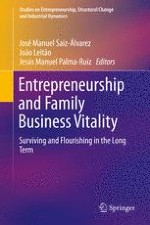2020 | OriginalPaper | Chapter
Is Being Conservative at Home Whilst Taking Risks Abroad a Suitable Competitive Strategy? The Case of Spanish Family Firms Internationalizing to Mexico
Authors : Julen Castillo-Apraiz, Unai Arzubiaga, Jesús Manuel Palma-Ruiz
Published in: Entrepreneurship and Family Business Vitality
Publisher: Springer International Publishing
Activate our intelligent search to find suitable subject content or patents.
Select sections of text to find matching patents with Artificial Intelligence. powered by
Select sections of text to find additional relevant content using AI-assisted search. powered by
